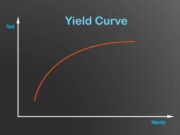What is a ‘Bad Debt Expense’
Bad debt expense represents the amount of uncollectible accounts receivable that occurs in a given period. Bad debt expense occurs as a result of a customer being unable to fulfill its obligation to pay an outstanding debt due to bankruptcy or other financial problems. This expense is the cost of a business having the inability to collect its debts.
Explaining ‘Bad Debt Expense’
Even if a receivable has been deemed uncollectible and written off to bad debt expense, the business retains the right to collect funds in the event of a bankruptcy court asset distribution or sudden change in the vendor’s ability to pay. Bad debt expense occurs because an entity extends credit to customers. Since a company may elect to forgo upfront payment, it incurs the risk of customers having the inability to pay for goods or services. Therefore, bad debt expense is used as a financial metric to determine if the credit and collection process is efficient.
Direct Write-Off vs. Allowance Method
There are two different application methods of recognizing bad debt expense. One is called the direct write-off method. Using this method, uncollectible accounts are specifically written off as they become uncollectible. This occurs upon receipt of a bankruptcy notice or after a specified period of time. Although the direct write-off method ensures the exact amount of uncollectible accounts is recorded, it fails to uphold the matching principle in which the expense is not always recognized in the same period as the revenue. For this reason, bad debt expense may be calculated using the allowance method. The allowance method establishes an estimated dollar amount of uncollectible accounts in the period the revenue is earned.
Calculating Bad Debt Expense Using Allowance Method
When using the allowance for uncollectible accounts, the estimated amount of bad debt expense is calculated in one of two main ways. First, an aging schedule is utilized to determine the duration of time a receivable has been outstanding. Using industry averages and company historical figures, a business takes a specific percentage of each age group and charges this estimate to bad debt expense. The specific percentage typically increases as the age of the receivable increases. This is because default risk increases and collectability decreases as a bill ages. Alternatively, a business may calculate bad debt expense by taking a percentage of net sales. This fixed rate is calculated based on the company’s historical experiences with bad debt.
Financial Statements
Bad debt expense is generally classified as a selling or administrative expense and is found on the income statement. It is one component used in the calculation of net income. The related accounts to bad debt expense, accounts receivables and allowance for doubtful accounts, are both reported on the balance sheet.
Bad Debt Expense FAQ
What is the bad debt expense?
How do you calculate bad debt expense?
What is the journal entry for bad debt expense?
Where is bad debt expense on income statement?
When can you write off bad debt expense?
Can you reverse bad debt expense?
What are the two methods for recording bad debt expense?
Further Reading
- Bad Debt" Expense": Not a Member of the Class of Data for Measuring Operating Income: A Reply – www.jstor.org [PDF]
- The impact of IFRS adoption on management of bad debt expense and real operational activities: evidence from South Korea – www.tandfonline.com [PDF]
- Do initial public offering firms manage accruals? Evidence from individual accounts – link.springer.com [PDF]
- Factors affecting charity care and bad debt charges in Washington hospitals – search.proquest.com [PDF]
- Finance and economic breakdown: modeling Minsky's “financial instability hypothesis” – www.tandfonline.com [PDF]
- The financial performance of hospitals belonging to health networks and systems – www.jstor.org [PDF]
- The Economic Value Added (EVA): an analysis of market reaction – www.sciencedirect.com [PDF]


































